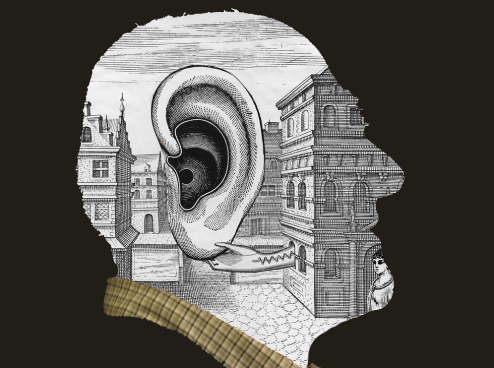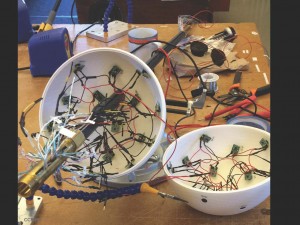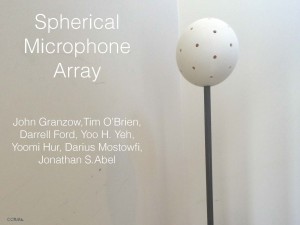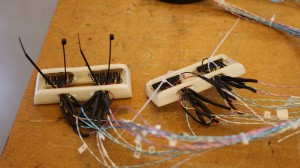Here is the abstract for a talk about the spherical mic that its creators will be presenting at the Acoustical Society of America.
An open-source spherical microphone array design. John Granzow, Tim O’Brien, Darrell Ford, Yoo H. Yeh, Yoomi Hur (CCRMA, Stanford Univ., 660 Lomita Dr., Stanford, CA 94305, granzow@ccrma.stanford.edu), Darius Mostowfi (Sigma Eng., San Carlos, CA), and Jonathan S. Abel (CCRMA, Stanford Univ., Stanford, CA)
We present an open-source design for producing a spherically baffled, 32-channel microphone array having elements aligned with the vertices and face centers of a dodecahedron, and fabricated using additive manufacturing (3-D printing). The design approach emphasized low cost, assembly ease, and acoustic integrity. Mechanical, electrical, and acoustical design considerations are discussed, as are assembly and calibration details. The baffle is a 10-cm-radius sphere, built from separable hemispheres, and supported by a 2-cm-diameter cylindrical stand that serves as a conduit for the microphone signal cables. Microphone capsules are mounted on preamp boards, which provide balanced line level outputs, and press fit to the baffle. The performance of the array is characterized, and an example application to spatial room impulse response measurement is provided. Design documents, including the enclosure model and preamp electrical design and board layout, are provided at https://ccrma.stanford.edu/~granzow/sphericalmicarray/
Max Hack: Instead of hand soldering each connection on the DB25 plug, they 3D printed a bracket and then used female crimp connectors to attach to each pin:
Check out John Granzow and Tim Obrien’s webpages for more information:
https://ccrma.stanford.edu/~tsob/site/
https://ccrma.stanford.edu/~granzow/



